Editor’s note: continued from Day One in North Korea.
Part of Day Two in North Korea.
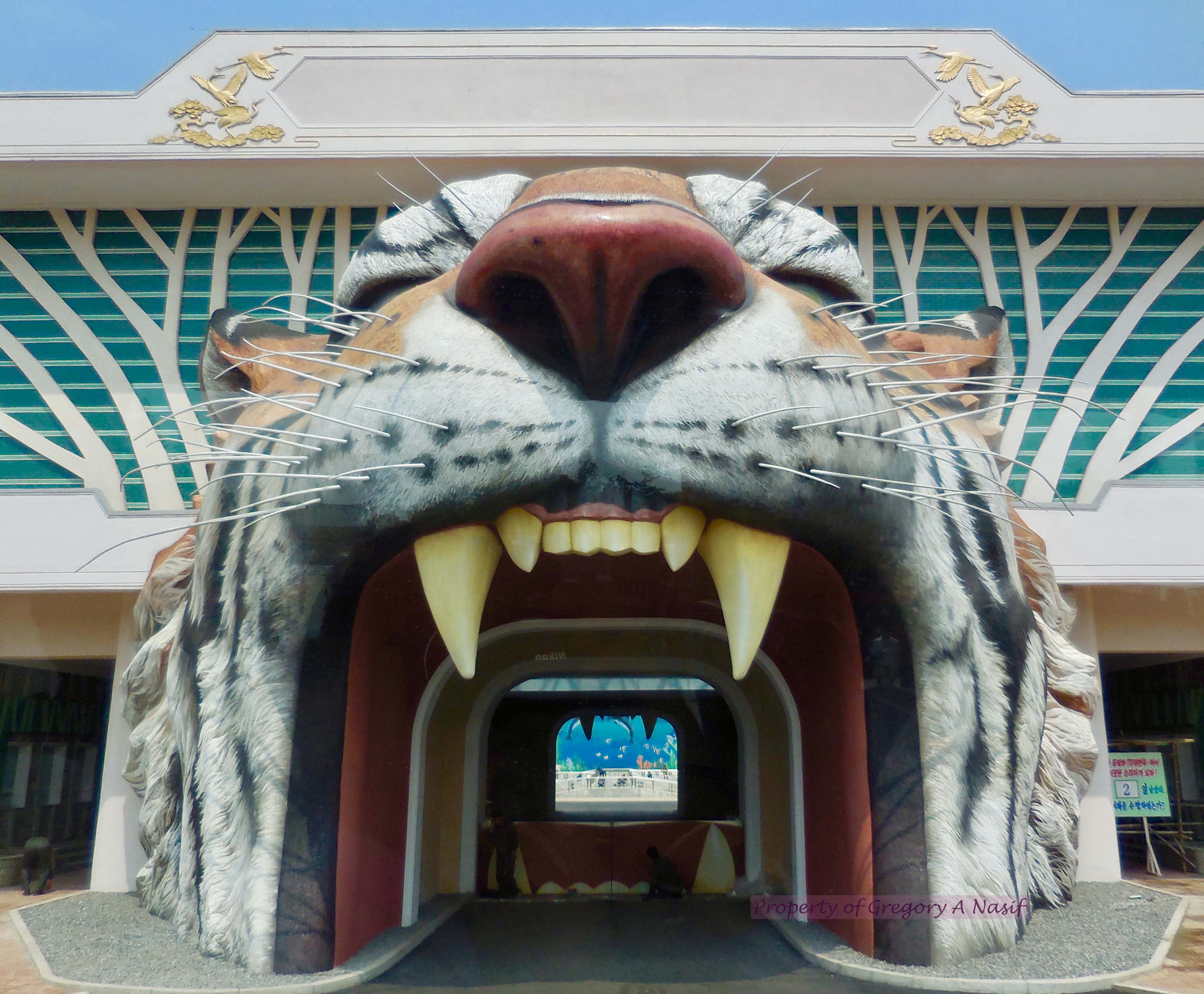
“No mercy for the enemies! That’s why our NATIONAL ANIMAL is the tiger!” exclaimed Mr. Hang, our tour guide, staring me in the face. His tone switched instantaneously as he smiled at the group at large and calmly asked, “can you understand?”
“Yes!” we affirmed.
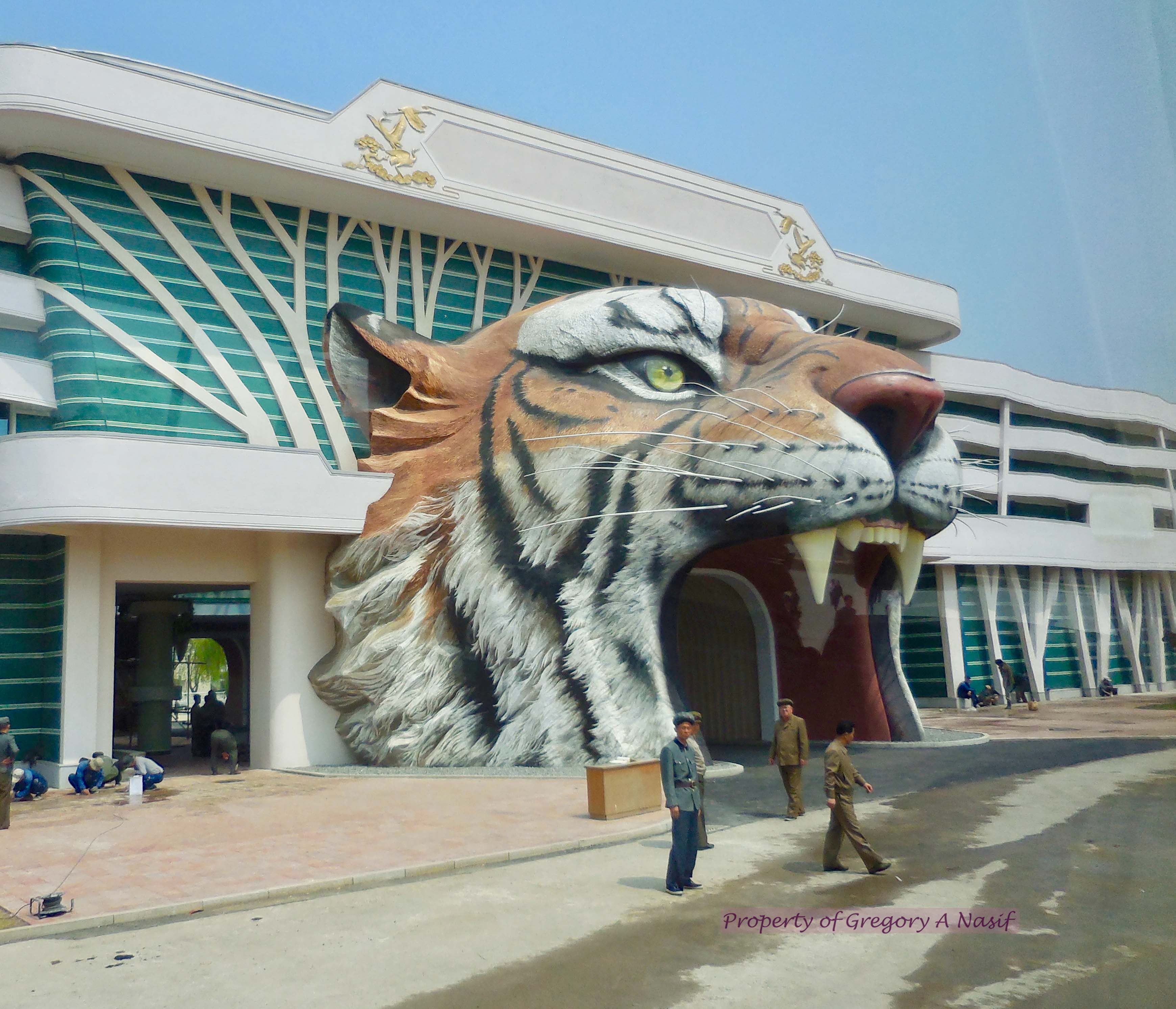
It was early on Sunday, May 1st, May Day, and our tour bus was barreling through Pyongyang, North Korea. On passing the Pyongyang Zoo, the tour group oo’ed and ah’ed at the massive tiger head surrounding the door. A tourmate had asked “Why is it so big?” and that’s how Mr. Hang responded – to me.
Thirty minutes later, in shirts and ties, we were dropped in a group of what must have been almost every foreigner in the country, and caught our first glimpse of today’s destination.
Formerly the home palace of Kim Il-sung, it is now he and his son’s final resting place, the host of authoritarian communism’s favorite pastime: deifying bad people by lying them in state.
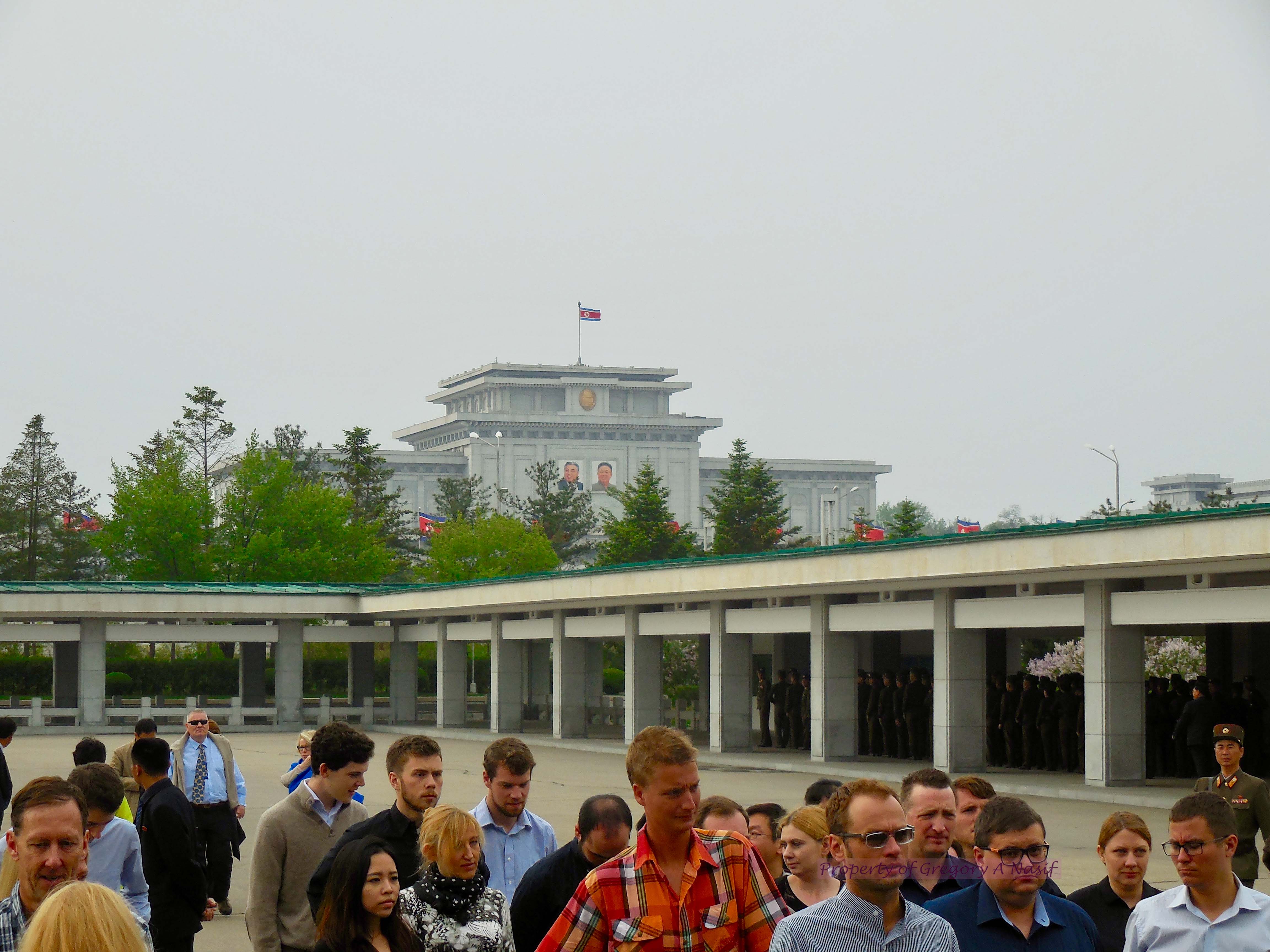
The only major lesson to take from this experience was to truly internalize the depth of love many North Koreans have for their leadership, and to acknowledge the challenge this portends for democratic nations, either before or after the potential collapse of the North Korean government.
Here is my story of visiting this most unusual place.
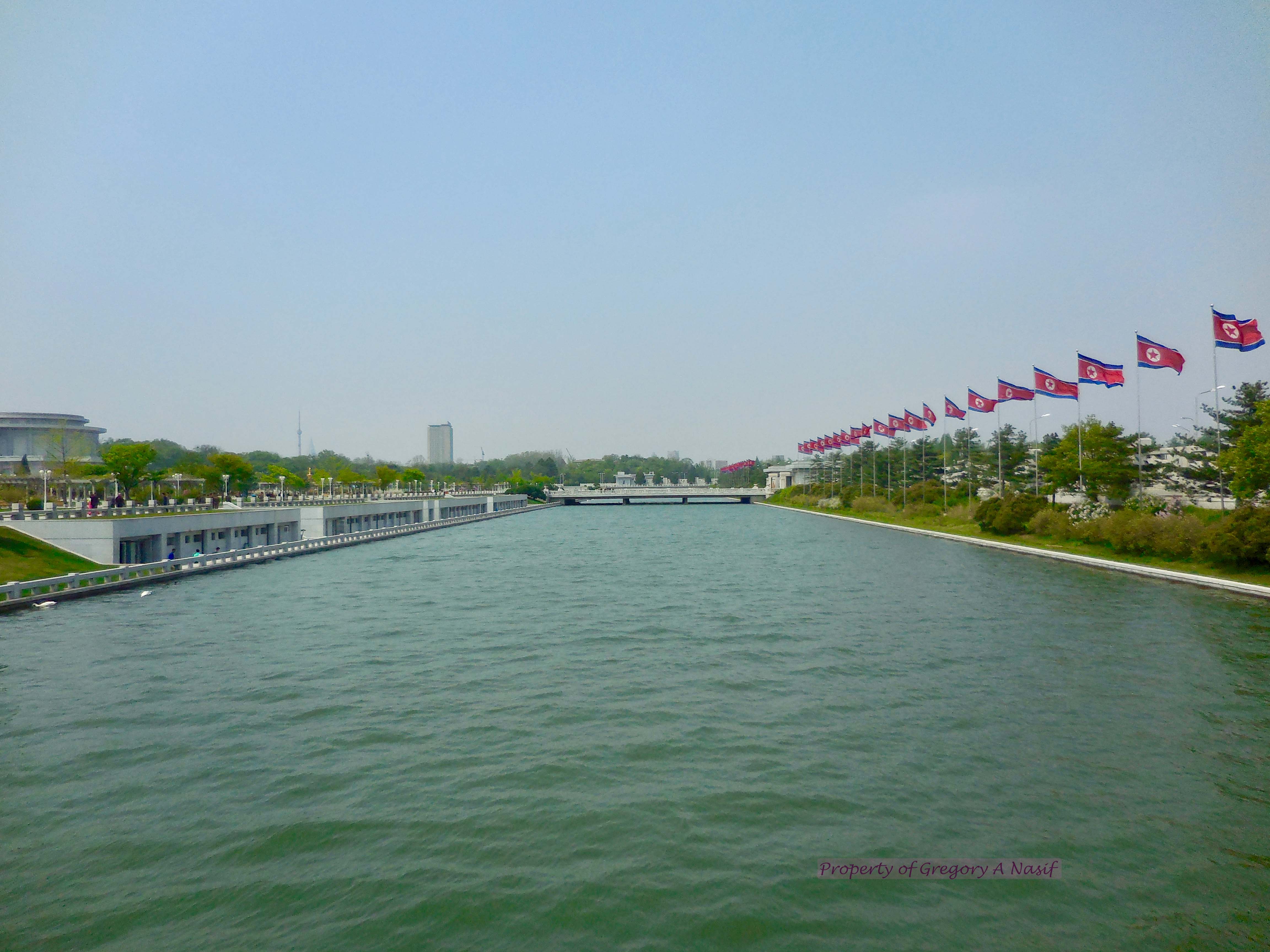 The Kumusan Palace of the Sun does not allow cameras indoors… nor wallets, phones, keys or sunglasses. We couldn’t even put our hands in our pockets. In this, the most “sacred” place in all of North Korea, there can be no distraction from what lies within.
The Kumusan Palace of the Sun does not allow cameras indoors… nor wallets, phones, keys or sunglasses. We couldn’t even put our hands in our pockets. In this, the most “sacred” place in all of North Korea, there can be no distraction from what lies within.
The way into the palace was a long, flat indoor moving walkway. “Drawn out” would be an understatement for this leg of journey.
Windows on either side of the long ‘travolator’ (yes, this is what they are called in English) showed dexterously well-manicured gardens and ponds – coated up and down in North Korean flags. Ahead and to the right loomed the palace. In the ceiling above, speakers were sounding out some kind of passionate national score.
It was a song of patriotism and tears and childhood and love. It was a passionate melody of glory, and perhaps, for North Koreans, was a fitting anthem for their leaders and for the long march to see them. But this band of tourists, alone as we were, could only assume this – for now. We loitered awkwardly, trying not to laugh, and wondered what this mysterious lair we were roving toward had in store for us.
For ten minutes.
And the ten-minute travolator was followed by another eight-minute one. This second one, a right turn directing us to the heart of the complex, had no windows. There were instead life-sized photographs of the Kims lining the walls, upright photos of such rich color, staging and quality they seemed to blur the lines between photographs, portraits, and paintings.

On the left side, portraits of Kim Il-sung progressed chronologically from when he ruled the nation as a young man. On the right, photos of Kim Jong-il regressed chronologically from shortly before his 2011 death. We expected this to end in a portrait of them together, perhaps in 1990 or 1994 as power was changing hands, but it instead ended oddly in a portrait of Kim Jong-un.
Laughter rang out, in this most solemn place for North Koreans. Whatever ocean of mystique the propaganda ministry was pooling drip by drip with 18 minutes of photos and music around the first two leaders seemed to evaporate with the corpulent copycat Kim Jong-un. Maybe there’s some symbolism there. Or maybe that’s only how a foreigner interprets it.
There were many statues of the leaders within, large and small. Through more portentous halls, menacingly large and overly jovial statues of the leaders, and even static clean rooms, we wondered how long they’d try to promote the facade of these dead tyrants before, quite suddenly, we were whisked into a tall dark chamber.
The room was dark, with a hint of blue. Soldiers stood guard in all four corners – perhaps, the most prized honor guard duty in the country.
There, in a lit glass case, in his iconic gray suit, laid the 104-year-old body of Kim Il-sung. He fought the Japanese. He was hand-picked by Joseph Stalin. He invaded South Korea. Millions of deaths that lay on those hands, now cupped together over a folded North Korean flag. So much of the 20th century was packed into that small transparent coffin.

From Kim Il-sung’s funeral (The Herald Sun)
There was a sense that, even his beyond death, this was the most powerful man in the country, with so many North Koreans and so much of their national budget committed to his honor, his will reigning supreme across the land, and his resemblant grandson ruling the nation with such authority.
His son was similarly honored.
Our second stop reflected something more insecure about North Korea’s second sovereign. Kim Jong-il was short, and his tiny withered body donned military attire despite his never serving in any conflict. He looked like a teddy bear in a general’s suit. For all the pomp of a man who was rarely seen without Ray-Ban sunglasses, and had luxury foods airlifted daily to his palace during the Great North Korean Famine, it was clear that death humbles us all.
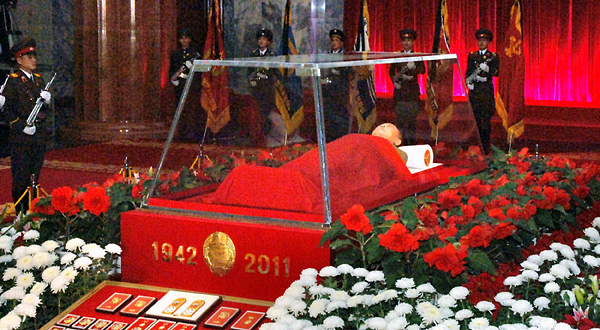
Funeral of Kim Jong-il. (The New York Times)
And from a groomed, smiling, presentable war hero (as Kim Il-sung was initially promoted to the Korean people), to a raging, insecure, ill-tempered oligarch, who had to be buried in his military attire to assert his influence, it was also clear that glory and respect are not hereditary, even if money and thrones are. But that analysis as well, may only belong to this author alone.
Visitors are required to bow here.
This is clearly a sensitive issue in America. In Japan and South Korea, bowing is a commonplace greeting. In the US it’s seen to be a sign of servitude or humility. In North Korea it represents survival – for the citizens, it’s bow to the leaders or die.
I could have skipped this daytrip. I could have skipped North Korea entirely – where citizens bow to survive every day. But cultural exchange has an immeasurable value. North Koreans were shocked to meet me, and it may well be because I didn’t have horns. Learning about the way people live is the exact kind of cultural exchange that may liberate the North Korean people once and for all. This is an opportunity for which I chose to bow.
We were whisked from these chambers into large halls full of foreign accolades for the former dictators and massive photographs of them with other world leaders. Most were labeled along the lines of “Medal of Friendship” from some town the leader visited in an Eastern Bloc country, but many were from across the developing world, and some even wealthy democratic countries like France and Austria. The photographs were of various leaders – and most interestingly, President Jimmy Carter, who, alone among American presidents, is quite revered in North Korea.
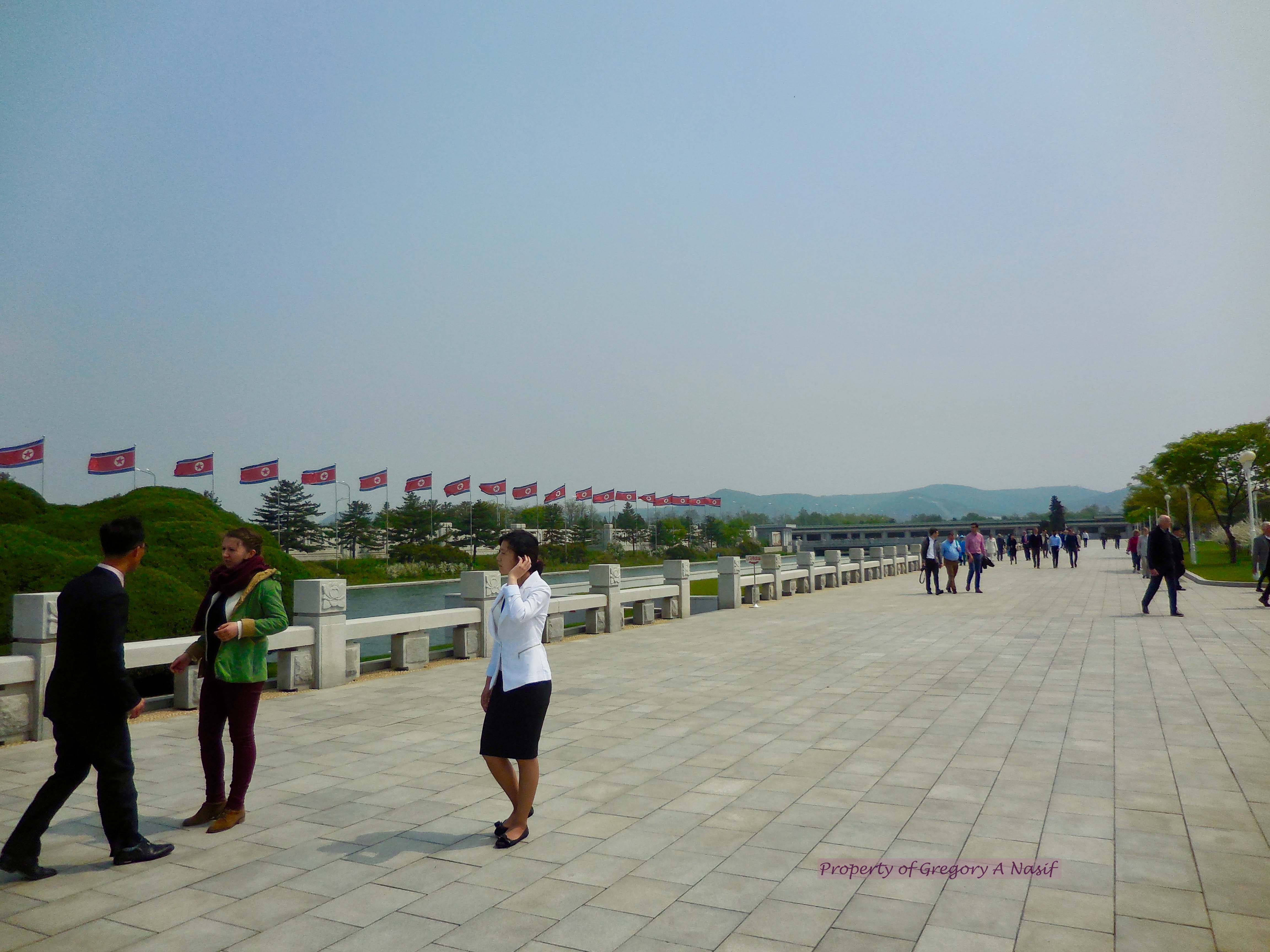
The rest of the palace was some kind of museum, displaying the personal possessions of the leaders. There was a large boat, allegedly ridden by Kim Jong-un, with a hull at least 75 feet long and wooden decks on the bow and stern. Most peculiar was the strongly asserted and rather ostentatious claim that the boat was brought into the building intact. Why?
One cabin – a whole log cabin – was promoted as the death-place of Kim Il-sung, he allegedly having just signed papers to the effect of reuniting North and South Korea. This may be at least half-true.
Another room showed the deathplace of Kim-Jong-il, this time a train car. Guides boasted that the whole car was unchanged since his death. While they spoke of Kim Jong-Il’s “great accomplishments” and his untimely death as he worked for “the betterment of the people,” every single foreign eye was on his desk, on which surprisingly sat a MacBook Pro laptop.
It was the only corporate logo we’d recognized in 48 hours. One may not realize how many corporate logos they look at every day, every hour, even every minute, until they spend two days away from them. It added an unexpected dash of factual verification to an otherwise heavily propaganda-ridden museum, for of course Kim Jong-il would keep for himself so many luxuries he denied to his people.
The emotional cocktail of this bizarre visit ended with a sharp twist. Until this moment we tourists had moved through the museum imagining – only imagining – the way it was seen by the North Korean people.
Perhaps that made it easier to achieve some kind of cognitive dissonance, to laugh to ourselves about the chubby depots in their glass cases and their halls of narcissism. For there was always enough time to see everything, yet never enough time to take it all in. We could swallow without chewing the magnanimity of a massive palace honoring mass murderers, we could joke about the world of lies and cruelty with the next mesmerizing distraction. We were only exposed to the perpetrators, and never to their victims. Until the eighteen-minute travolator out of the palace.
While usual North Korean visitors seemed to be exiting through the other wing of the symmetrical building, our tour group departed the same way we came in, while hundreds, maybe thousands of North Koreans entering the facility roved past on the travolator opposite. We could no longer imagine their place in this crazy world. We’d come face to face with it.
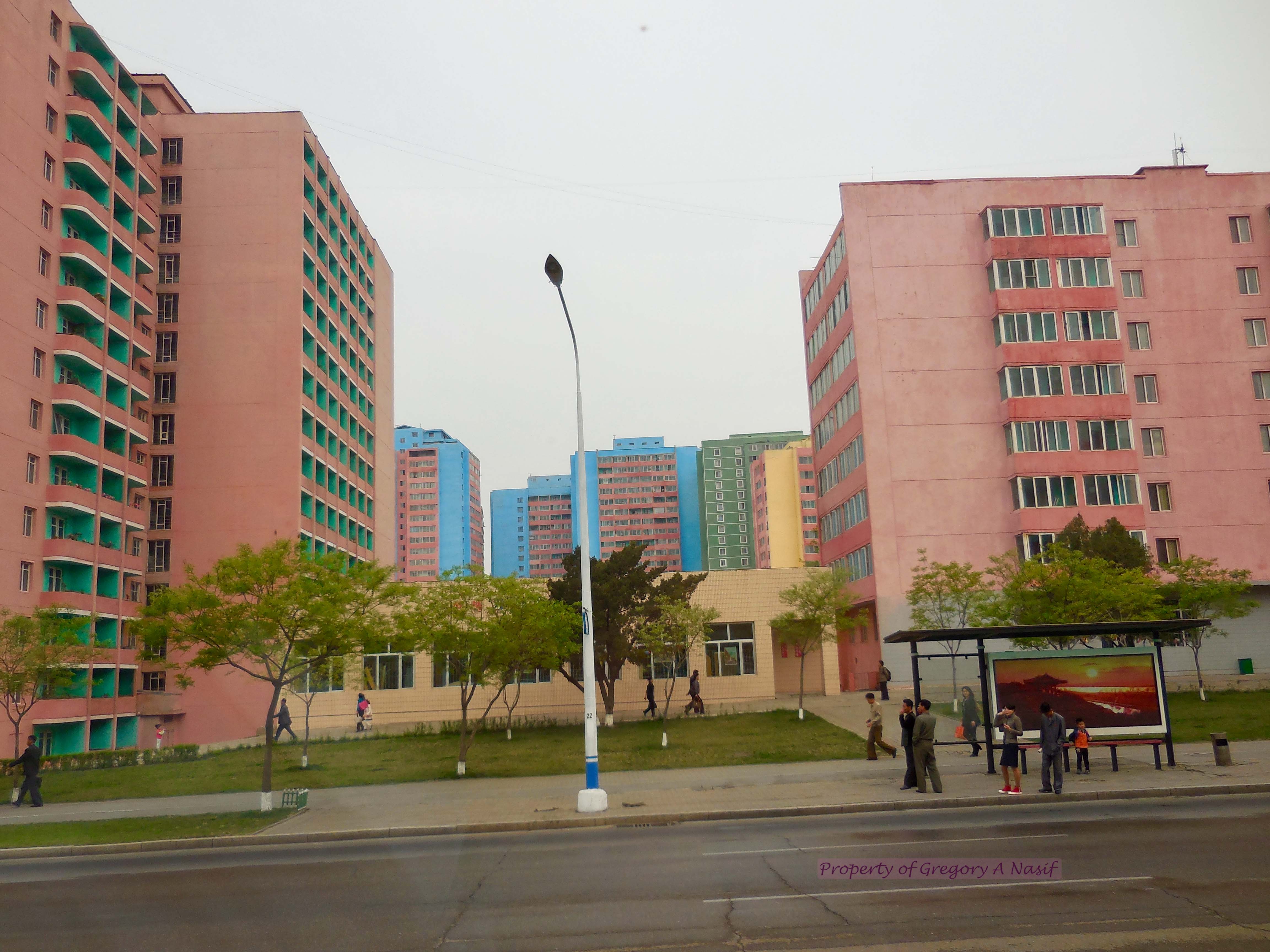
Street in Pyongyang. There are no advertisements at bus or tram stops, only propaganda paintings.
For eighteen minutes.
The stream of sullen Koreans roved past on the unreasonably long walkways, wearing traditional attire or suits and ties, and solemn, almost disdainful expressions.
A minute or so in we heard whimpers. A woman, perhaps 60 years old, in full traditional Korean dress, was roving toward us. She was weeping uncontrollably. She held a handkerchief to her face, and she held all of our attention. She never looked at us – only straight ahead, to a destination minutes away that perhaps she needed the travolator’s strength to reach.
Sometimes men would glance at us. Sometimes they stared at us. Angrily. The travolator being so long a stretch, there seemed to be Koreans for half a mile, on their way to see Kim Jong-Il and Kim Il-Sung for perhaps the first time in their lives.
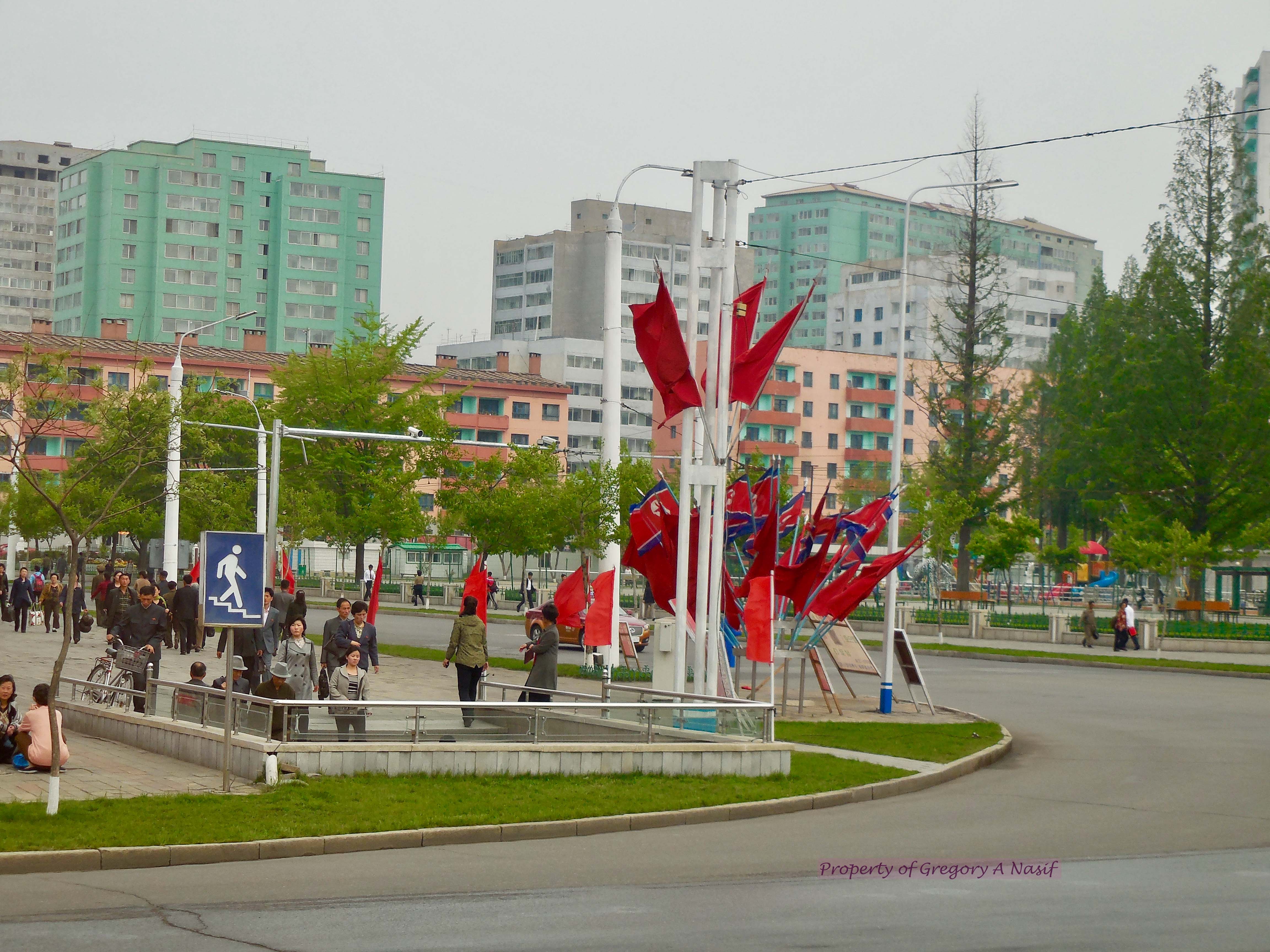
Empathy in the moment can change everything. There was less doubt now that they’d been raised to believe these men were their national founders, their heroes and saviors. It was easier to imagine that to these miserable people, the Kims were George Washington and Jesus Christ rolled into one, and we foreigners, disciples perhaps of Satan and Hitler.
To one learning about North Korea in school, on blogs, in documentaries, this national mentality of the North Korean people is not news, and it wasn’t for me either. But there is no experience quite like seeing it up close. The person next to you. One thousand times. The power of propaganda.
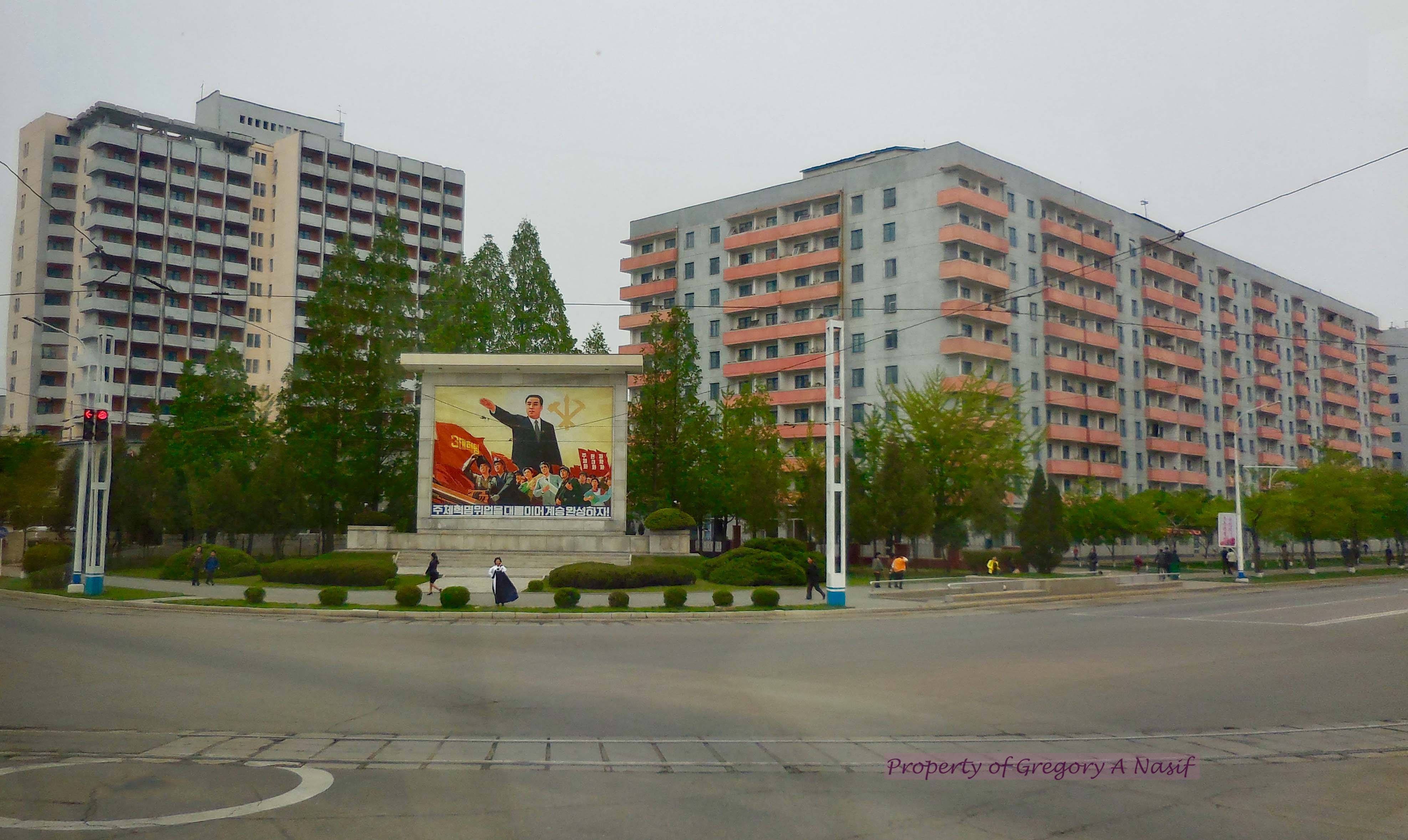
The emotionally-charged music, the whimpers of older women, and the rumble of the travolator were the only conversation we had for these 18 minutes. We could do nothing but take that all in. It felt like 18 days.
I reflected on what our guides warned us about two hours earlier.
“This is not a happy place,” they had said. “It is a very sacred place in Korea.”
“Do people bring their kids here?” I asked.
“No,” Ms. Jeon, the other tour guide replied patiently. “People don’t come here for fun. They come to pay respects, maybe once in their lives, if they can. Like a… like a…. -”
“Pilgrimmage?” I offered.
“Kind of,” she said, delivering her icy, deadpan stare.
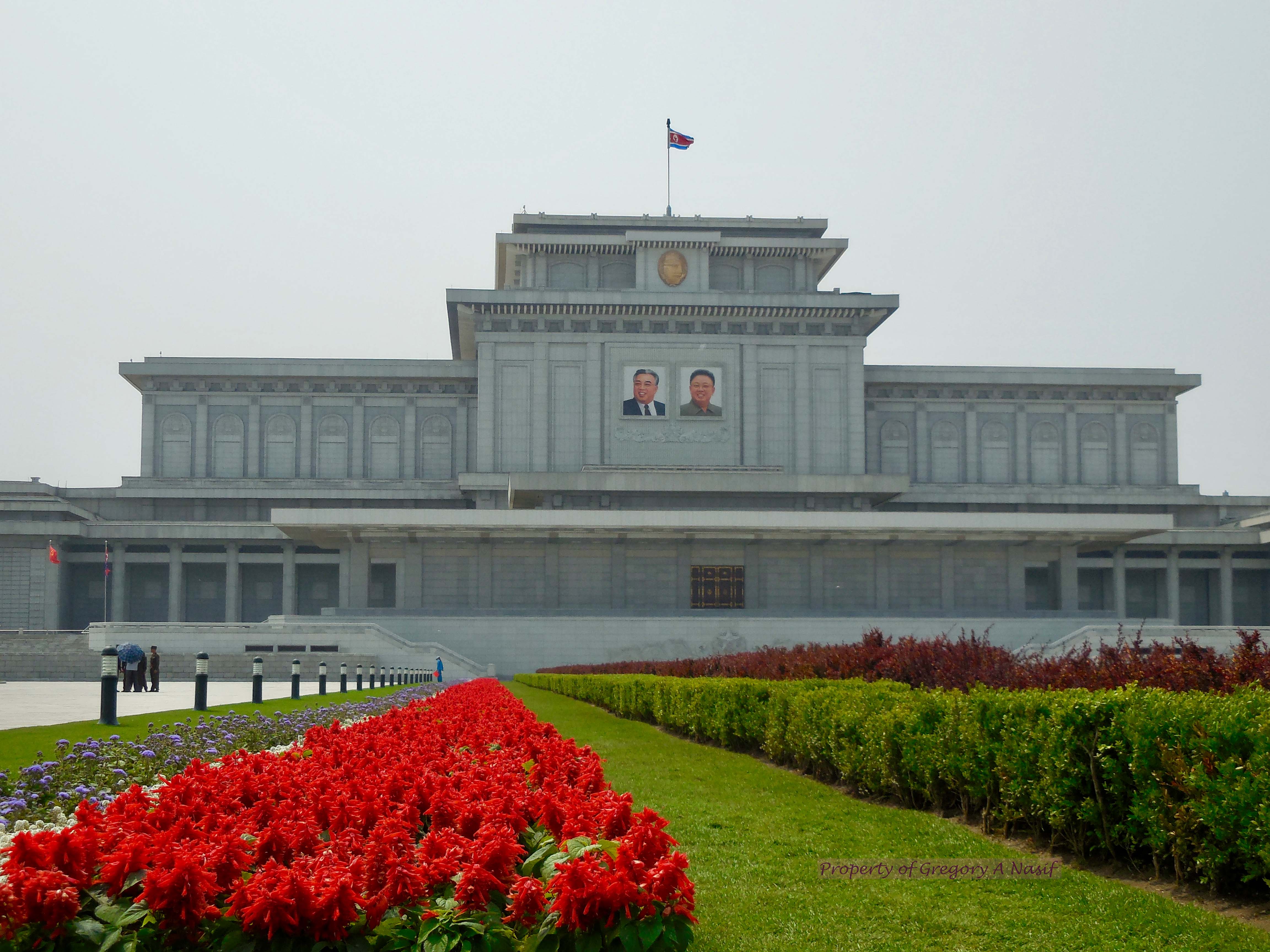 It occurred to me that this regime may not end peacefully anytime soon.
It occurred to me that this regime may not end peacefully anytime soon.
To be continued
All unsourced photos property of Gregory A Nasif
@gregnasif